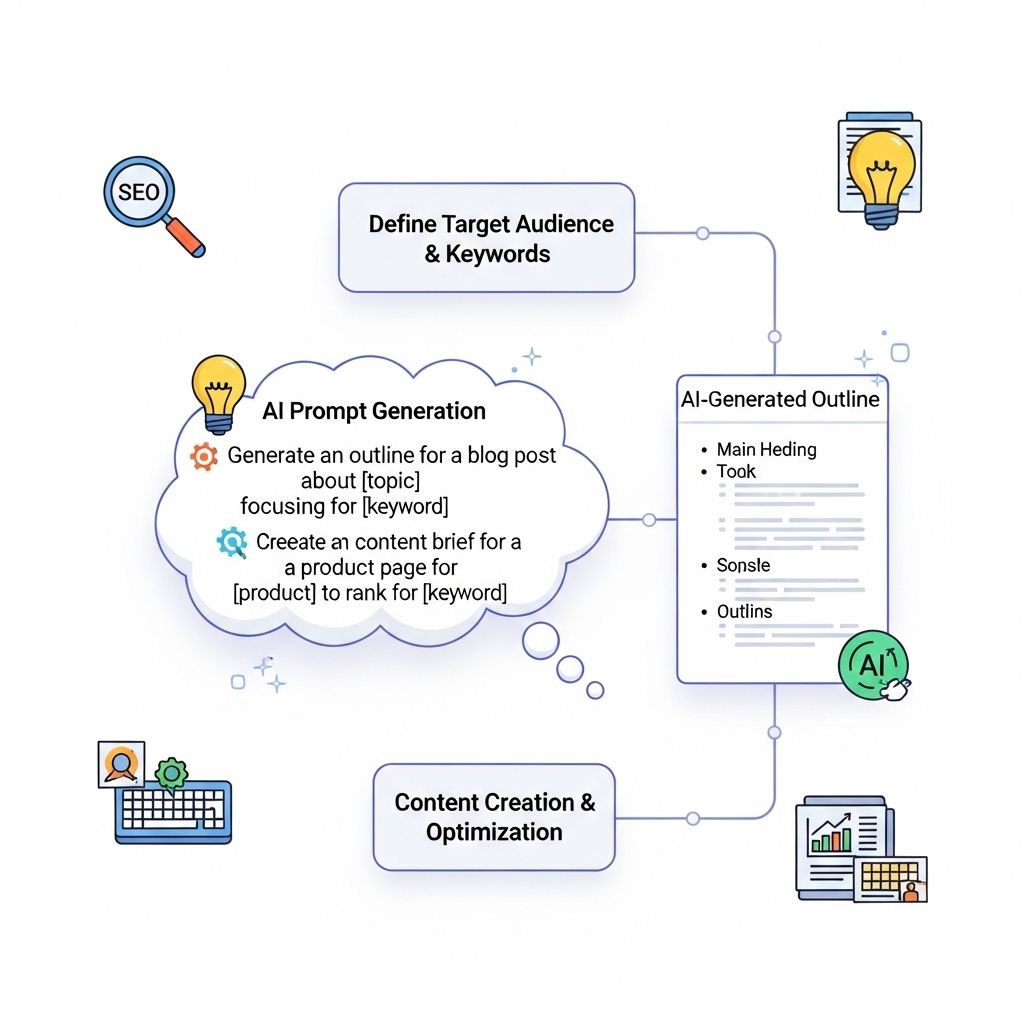In the ever-evolving landscape of digital marketing, staying ahead of the competition is crucial, especially when it comes to search engine optimization (SEO). As we approach 2025, the trends and techniques that dictate successful SEO strategies are continuously changing. One of the most powerful tools in an SEO expert’s arsenal is understanding and utilizing effective keyword prompts. This article will explore various keyword prompts that can significantly enhance your SEO efforts, enabling you to drive more traffic to your website and improve your online visibility.
The Importance of Keywords in SEO
Keywords are the cornerstone of SEO. They act as the bridge between what people are searching for and the content you are providing. Selecting the right keywords can lead to higher search engine rankings, increased organic traffic, and ultimately, improved conversions. As search engines become smarter and more intuitive, the focus shifts from simply using the most popular keywords to understanding user intent and delivering relevant and valuable content.
What Are Keyword Prompts?
Keyword prompts are phrases or terms that can guide content creation and SEO strategies. They help marketers and content creators identify topics, trends, and specific areas of interest that should be addressed. By leveraging keyword prompts, businesses can align their content with the needs and desires of their target audience, making it more likely to appear in relevant search results.
Identifying Effective Keyword Prompts
To make the most of keyword prompts in your SEO strategy, it’s essential to identify effective ones tailored to your audience. Here are several methods to find impactful keywords:
- Google Trends: A powerful tool for discovering trending topics and keywords related to your industry.
- Keyword Research Tools: Utilize tools like Ahrefs, SEMrush, or Ubersuggest to find high-volume keywords.
- Competitor Analysis: Analyze the keywords your competitors are ranking for to uncover potential gaps and opportunities.
- Social Media Listening: Monitor discussions and trending topics on platforms like Twitter, LinkedIn, and Reddit to identify relevant keywords.
Utilizing Long-Tail Keywords
Long-tail keywords are longer and more specific keyword phrases that are often less competitive but can drive highly targeted traffic. These keywords usually consist of three or more words and indicate a clearer search intent. For example:
| Short-Tail Keyword | Long-Tail Keyword |
|---|---|
| Shoes | Best running shoes for flat feet |
| Travel | Affordable family vacation spots in Europe |
| Fitness | Effective home workouts for beginners |
Benefits of Long-Tail Keywords
Using long-tail keywords offers several advantages:
- Higher Conversion Rates: Users searching for specific terms are more likely to convert.
- Less Competition: Long-tail keywords typically have lower competition, making it easier to rank for them.
- Better Targeting: These keywords allow for more tailored content that meets users’ specific needs.
- Improved User Intent Matching: Long-tail keywords often align more closely with user intent, enhancing the quality of traffic.
Keyword Prompt Examples for 2025
As we look toward 2025, here are some keyword prompts that can help shape your content strategy:
Emerging Technology
- AI applications in healthcare
- Blockchain trends in finance
- Future of remote work technology
- 5G impact on smart cities
Environmental Sustainability
- Eco-friendly business practices
- Impact of climate change on agriculture
- Innovations in renewable energy
- Sustainable fashion trends
Digital Marketing Strategies
- Effective social media campaigns for small businesses
- Content marketing trends to watch in 2025
- Email marketing strategies for high engagement
- SEO best practices for voice search optimization
Implementing Keywords into Your Content
Once you have identified keyword prompts, integrating them into your content effectively is crucial. Here are some best practices:
- Title Tags: Ensure your primary keyword appears in the title tag of your webpage.
- Headings and Subheadings: Incorporate keywords naturally into headings and subheadings.
- Meta Descriptions: Use keywords in your meta descriptions to improve click-through rates.
- Body Content: Integrate keywords organically throughout your content, ensuring it reads naturally.
- Image Alt Text: Use keywords in image alt text to enhance SEO and accessibility.
Monitoring and Adjusting Your Keyword Strategy
SEO is not a one-time effort; it requires ongoing monitoring and adjustment. Utilize tools like Google Analytics and Search Console to track performance metrics related to your keywords, such as:
- Organic traffic growth
- Click-through rates (CTR)
- Conversion rates
- Bounce rates
By regularly analyzing this data, you can identify which keywords are driving performance and which may need to be adjusted or replaced.
Staying Informed on SEO Trends
To keep your keyword strategy effective, stay informed about the latest SEO trends and algorithm updates. Follow industry leaders, subscribe to SEO blogs, and participate in web seminars. This knowledge will empower you to adjust your strategies in response to new developments, ensuring you remain competitive.
Conclusion
As we move toward 2025, leveraging effective keyword prompts will be vital for SEO success. By focusing on user intent, utilizing long-tail keywords, and continuously monitoring your results, you can significantly enhance your SEO efforts. Remember, SEO is a dynamic field that requires adaptability and a proactive approach. By implementing the tips and strategies outlined in this article, you will be well-prepared to boost your SEO performance and drive valuable traffic to your website.
FAQ
What are keyword prompts for SEO?
Keyword prompts are suggestions or phrases that help you identify relevant keywords to target in your content for better search engine optimization.
How can I use keyword prompts to improve my website’s SEO?
You can use keyword prompts to create high-quality content that aligns with what users are searching for, thereby increasing your website’s visibility and traffic.
What tools can I use to generate keyword prompts for SEO?
You can use tools like Google Keyword Planner, SEMrush, Ahrefs, and Ubersuggest to generate effective keyword prompts for your SEO strategy.
Why is it important to focus on long-tail keywords in 2025?
Long-tail keywords are typically less competitive and more specific, making it easier to rank for them and attract targeted traffic in 2025.
How often should I update my keyword list for SEO?
It’s recommended to review and update your keyword list regularly, ideally every few months, to ensure you stay relevant with current trends and search behaviors.
Can keyword prompts help with local SEO?
Yes, using keyword prompts that include local terms can significantly enhance your local SEO efforts, helping you attract customers in your specific geographic area.




